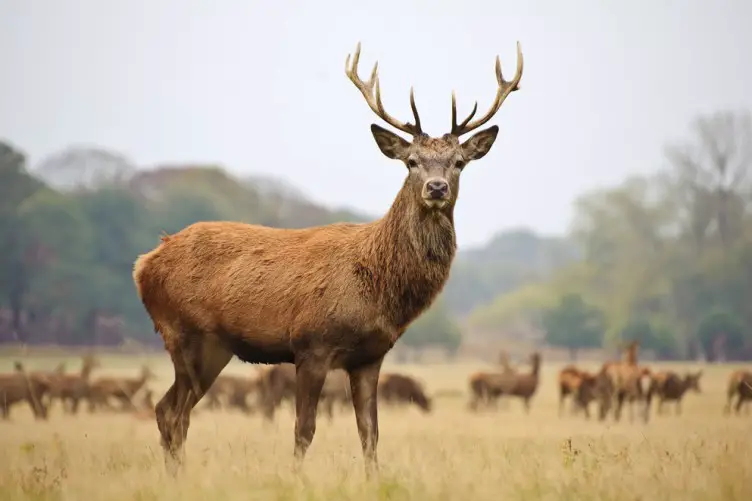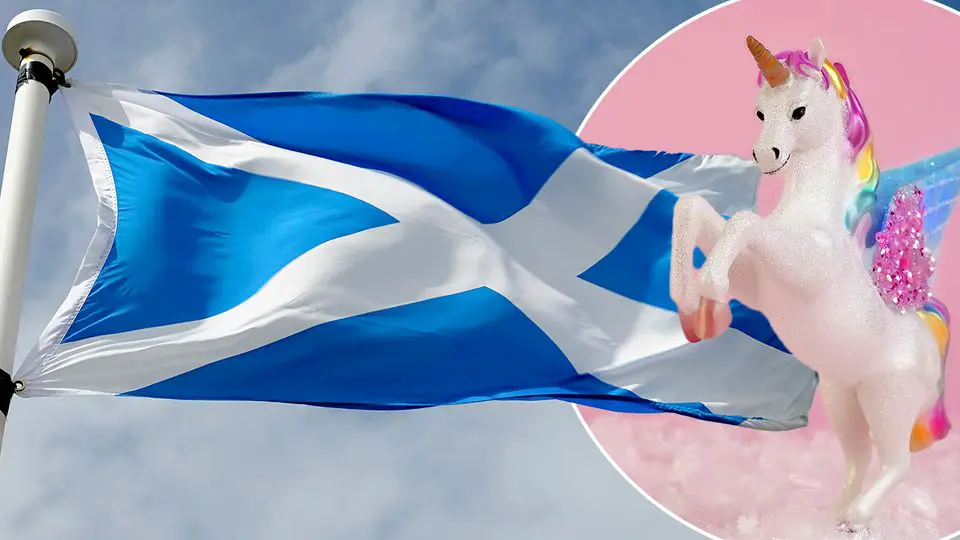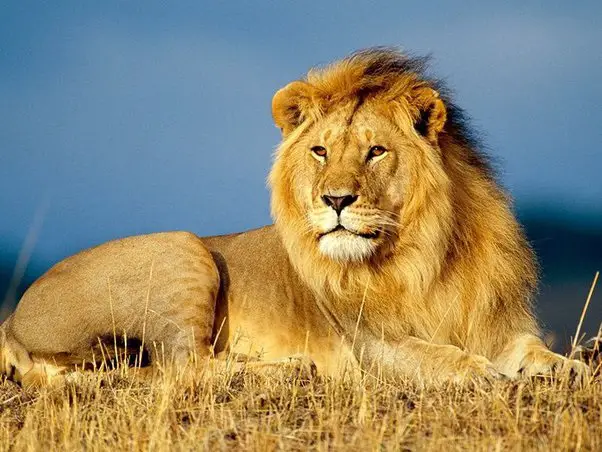The national animal of the United Kingdom is the lion. It has been a symbol of strength and courage for the country for centuries, and it appears on the coat of arms of both England and the United Kingdom.
The Origins of the National Animal of the UK
The origins of the national animal of the UK, the lion, can be traced back to ancient times. Lions have been associated with strength, courage, and royalty for thousands of years, and they have been depicted in art and literature throughout history.
In the case of the UK, the lion first became associated with England during the Middle Ages, when English kings would display lions on their coats of arms as a symbol of their power and authority. Over time, the lion came to be seen as a symbol of England itself, and it was eventually adopted as the national animal of the entire UK.
The association between the lion and the UK was further solidified during the reign of King James I, who commissioned a new royal coat of arms that featured not one, but three lions. This design became known as the “royal arms of England,” and it is still used today as a symbol of the British monarchy.
While lions are not native to the UK, their use as a national symbol reflects the country’s historical and cultural ties to other parts of the world, as well as its own sense of strength and pride.
The Lion: National Animal of England
The lion has been the national animal of England for many centuries, and it is one of the most well-known symbols associated with the country. The use of the lion as a symbol of England can be traced back to the Middle Ages, when English kings began to display lions on their coats of arms as a symbol of their power and authority.
Over time, the lion became increasingly associated with England itself, and it was eventually adopted as the national animal of the country. The lion is often depicted as standing on its hind legs, with its front paws raised in a powerful, aggressive stance. This image reflects the lion’s reputation as a fierce and powerful animal, and it has been used to symbolize England’s strength and determination throughout history.
Today, the lion remains a prominent symbol of England, and it is featured on many official emblems and logos associated with the country. For example, the lion appears on the emblem of the England national football team, and it is also depicted on the Royal Coat of Arms of the United Kingdom, which represents the entire country.
The Bulldog: Unofficial National Animal of England
The bulldog is often considered the unofficial national animal of England, and it is a beloved symbol of the country’s culture and identity. Here are some points that highlight the bulldog’s significance:
- Historical significance: Bulldogs have a long history in England, dating back to the 13th century when they were bred for bull-baiting. Over time, the breed became associated with England and its culture, and they were used as symbols of British nationalism during World War II.
- Cultural significance: The bulldog has become an iconic symbol of England’s culture and identity, and it is often depicted in art, literature, and popular culture. It is seen as a symbol of resilience, tenacity, and determination, reflecting the character of the English people.
- Sporting significance: Bulldogs are often associated with sports in England, particularly with football (soccer) and rugby. They are frequently used as mascots for sports teams, and they are often featured on team merchandise and clothing.
- Political significance: The bulldog has been used as a political symbol in England, particularly by conservative parties. It is often seen as a representation of traditional English values, and it has been used to rally support for conservative causes.
- Popularity: Bulldogs are one of the most popular dog breeds in England, and they are a common sight in parks, streets, and homes throughout the country. Their popularity reflects their status as a beloved national symbol and a treasured part of English culture.
The Red Deer: National Animal of Scotland

The red deer is the national animal of Scotland and is an important symbol of the country’s culture and heritage. Here are some points that highlight the red deer’s significance:
- Historical significance: Red deer have been an important part of Scotland’s wildlife for thousands of years and have played a significant role in the country’s culture and history. They have been depicted in art and literature throughout the ages, and their antlers were once used as weapons by ancient Scots.
- Cultural significance: The red deer is deeply embedded in Scottish culture, and it is often associated with the Scottish Highlands, which are known for their rugged, wild beauty. The deer are seen as a symbol of Scotland’s wilderness and natural beauty.
- Sporting significance: Red deer hunting is a popular sport in Scotland, and it has been practiced for centuries. The deer are known for their strength and agility, and they are highly prized by hunters. The sport is deeply ingrained in Scottish culture and has been celebrated in art and literature.
- Economic significance: The red deer also has economic importance in Scotland, as it is a valuable resource for the country’s hunting and tourism industries. Many visitors come to Scotland specifically to hunt or observe the deer, and their presence helps to support local businesses and communities.
- Conservation significance: Red deer are an important part of Scotland’s natural ecosystem, and efforts are being made to conserve and protect them. This includes managing deer populations to ensure that they do not become overpopulated and cause damage to the environment, as well as protecting their habitats and promoting responsible hunting practices.
The Dragon: National Animal of Wales
The dragon is the national animal of Wales and is a beloved symbol of Welsh culture and identity. Here are some points that highlight the dragon’s significance:
- Mythological significance: Dragons have been a part of Welsh mythology for centuries, and they are often depicted as powerful and mystical creatures with the ability to breathe fire. The Welsh dragon is said to represent the ancient Celtic deity Dewi, who was associated with fertility, wisdom, and power.
- Cultural significance: The dragon is deeply embedded in Welsh culture, and it is a symbol of Wales’ strength, pride, and resilience. It is often seen as a representation of the Welsh spirit and identity, and it has been used to rally support for Welsh causes.
- Historical significance: The dragon has played an important role in Welsh history, and it has been featured on the Welsh flag since the 15th century. The flag was used by Welsh soldiers during the Battle of Bosworth in 1485, and it has been a symbol of Welsh identity ever since.
- Sporting significance: The dragon is often associated with sports in Wales, particularly with rugby. The Welsh rugby team is known as the “Red Dragons,” and the dragon is featured prominently on team merchandise and clothing.
- Popularity: The dragon is a popular symbol in Wales, and it is often seen in art, literature, and popular culture. It is also a common motif in Welsh architecture and design, and it is featured on many official emblems and logos associated with the country.
The Unicorn: National Animal of Northern Ireland

The unicorn is sometimes considered the national animal of Northern Ireland, though it is not an official symbol of the country. Here are some points that highlight the unicorn’s significance:
- Mythological significance: Unicorns have been a part of mythology and folklore for centuries, and they are often depicted as magical creatures with a single horn on their forehead. The unicorn is seen as a symbol of purity, grace, and strength, and it has been used to represent various virtues throughout history.
- Cultural significance: The unicorn is deeply embedded in Irish and Scottish culture, and it is often associated with Celtic mythology and folklore. In Northern Ireland, the unicorn is sometimes used as a symbol of the country’s unique identity and cultural heritage.
- Historical significance: The unicorn has a long history in heraldry, and it has been used as a symbol of various noble families and kingdoms throughout Europe. In Northern Ireland, the unicorn has been featured on the coat of arms of several noble families, including the O’Neill and MacDonnell clans.
- Symbolic significance: The unicorn is often seen as a symbol of hope, strength, and perseverance, and it has been used to represent various causes and movements throughout history. In Northern Ireland, the unicorn is sometimes used as a symbol of peace and unity, as it is seen as a mythical creature that brings people together.
- Popularity: The unicorn is a popular symbol in Northern Ireland, and it is often seen in art, literature, and popular culture. It is also a common motif in Irish and Scottish architecture and design, and it is featured on many official emblems and logos associated with the country.
References:
https://www.theguardian.com/notesandqueries/query/0,5753,-17023,00.html

